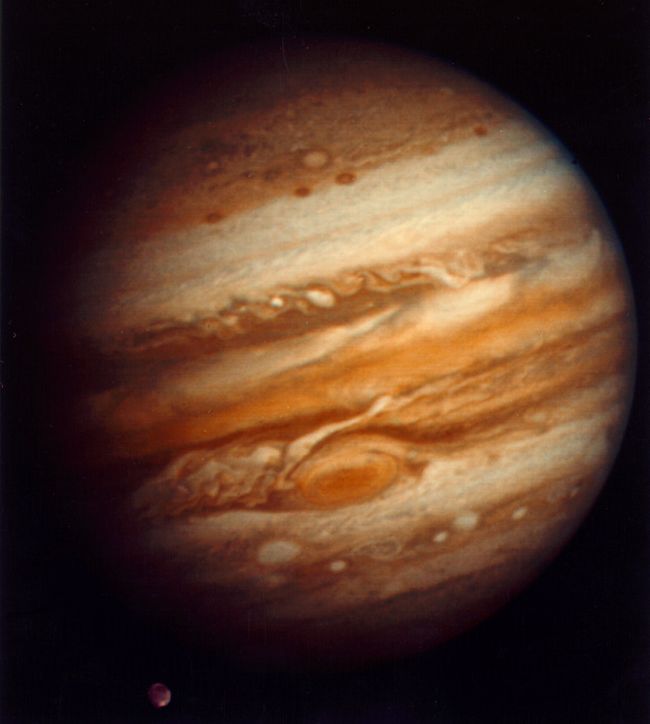
 |
|
|||||||
| General Off Topic Almost anything goes! |
 |
|
|
Thread Tools | Display Modes |
|
#1
|
|||
|
|||
|
March 5th marks the 40 year anniversary of Voyager 1 as it flew past Jupiter in 1979, revealing a surprising planetary system that includes moons of ice and fire. And scientists are still looking at some of these moons for signs of habitability for microbes.
Voyager 1 and its twin spacecraft, Voyager 2, both left Earth in 1977 on the trail of an unusual planetary alignment that happens every 175 years, according to NASA. The gas giant planets Jupiter, Saturn, Uranus and Neptune lined up in such a way that a spacecraft could use the gravitational field of one planet to swing on to the next. Voyager 2 flew past all four planets, while Voyager 1 instead traveled high above the plane of the solar system after visiting Jupiter and Saturn. Between them, the two spacecraft garnered basic knowledge about these large planets — measuring their atmospheres, their ring systems, their magnetic fields (including Jupiter's especially strong one) and how their inner cores may function. Jupiter had already been visited by the Pioneer spacecraft, but it still held surprises for Voyager 1 when it flew by in 1979. 
|
|
#2
|
||||
|
||||
|
Is not one of the moons close to the size of Earth Serge?
Water/Ice? Hmmm  Life of some sort at some years past? Life of some sort at some years past?
|
|
#3
|
|||
|
|||
|
Jupiter has 53 named moons and the scientists think it may have up to 79. Ganymeade I believe is slightly smaller than Mars! The various moons of Jupiter have various conditions as one can imagine, from frozen water to volcanoes and everything in between. Imagine that, 79 moons around a heavenly body.
|
|
#4
|
||||
|
||||
|
A lot, it is one HUGE planet though. I personally thing it is such a huge draw gravity wise on our solar system that I would imagine it is one of the largest factors on weather etc on Earth. It would vary greatly over the years based on the orbit and relationship to the sun and all the other planets inside our belt.
|
|
#5
|
|||
|
|||
|
Io's a Wagnerian wonder with it's thunderin' volcanoes, Europa is a tease; Life perhaps just beyond our reach. Stand 5 mins on each and your dead from radiation. We will go one day, we just must.
|
|
#6
|
|||
|
|||
|
Quote:
|
|
#7
|
|||
|
|||
|
Quote:
 I am personally waiting for Planet 9 or X as NASA calls it. So much has been said about that mysterious planet (NIBIRU) in historical accounts from the times of many, many centuries, ago... Yet NASA never even considered such a thing until recently, now they are saying without it the math of certain orbits of dwarf planets just doesn't add up... If discovered, here is what they would expect to find. The Caltech scientists believe Planet X may have has a mass about 10 times that of Earth and be similar in size to Uranus or Neptune. The predicted orbit is about 20 times farther from our Sun on average than Neptune (which orbits the Sun at an average distance of 2.8 billion miles). It would take this new planet between 10,000 and 20,000 years to make just one full orbit around the Sun (where Neptune completes an orbit roughly every 165 years). Now, search yourself for NIBIRU and compare... The problem is that much of the information has been taken out of context by the doomsday prophecies, etc... It gets confusing. Yet the possibility of it being there remains and NASA is looking for it. |
|
#8
|
|||
|
|||
|
Quote:

|
|
#9
|
|||
|
|||
|
|
|
#10
|
||||
|
||||
|
Why is Pluto always back and forth called planet 9 then not Serge?
I just also feel we are NOT a perfect orbit around the sun, and there are so so many variables with all the other planets are distance from sun, the suns varying temps etc. All this I would imagine have an effect on the Earths temps more than any thing else. Also are we not in a calming period as far as the Suns solar flares are concerned? We need some giant flares in the order like X factors: "Monday, April 2, 2001, the sun unleashed one of the biggest solar flare ever recorded, as observed by the Solar and Heliospheric Observatory (SOHO) satellite. The flare was definitely more powerful than the famous solar flare on March 6, 1989, which was related to the disruption of power grids in Canada." The biggest flares are known as "X-class flares" based on a classification system that divides solar flares according to their strength. The smallest ones are A-class (near background levels), followed by B, C, M and X. Similar to the Richter scale for earthquakes, each letter represents a 10-fold increase in energy output. So an X is ten times an M and 100 times a C. Within each letter class there is a finer scale from 1 to 9. That will fix the cell tower crap good 
|
 |
|
|
| Audio Aficionado Sponsors | |